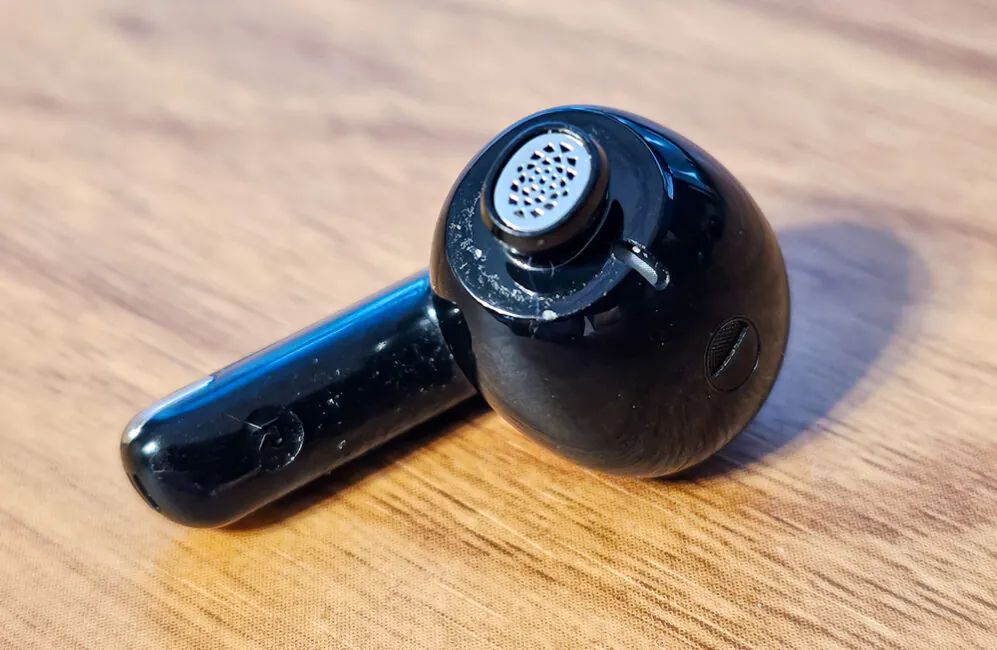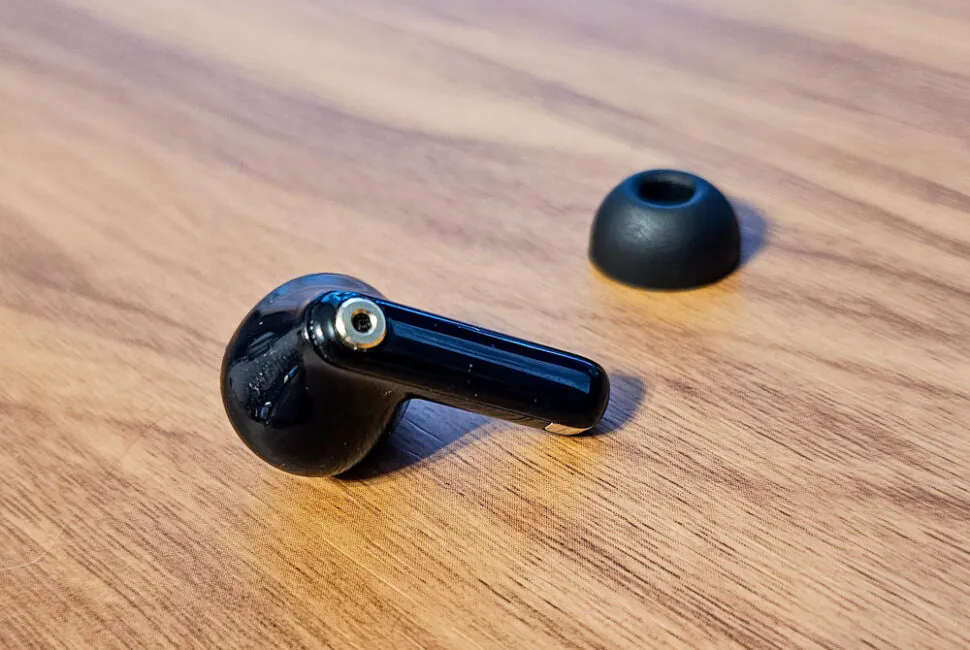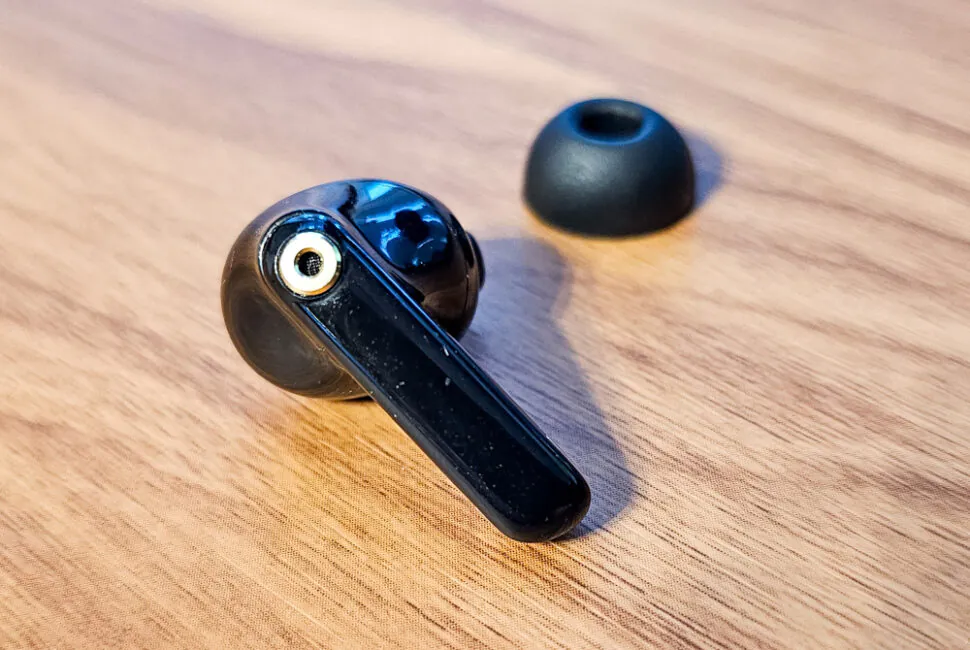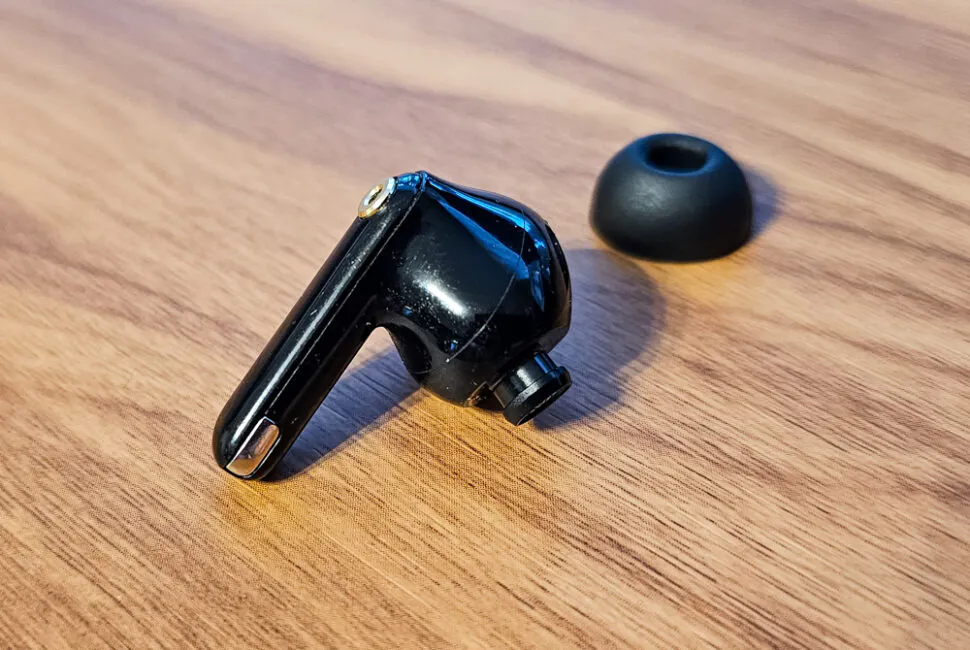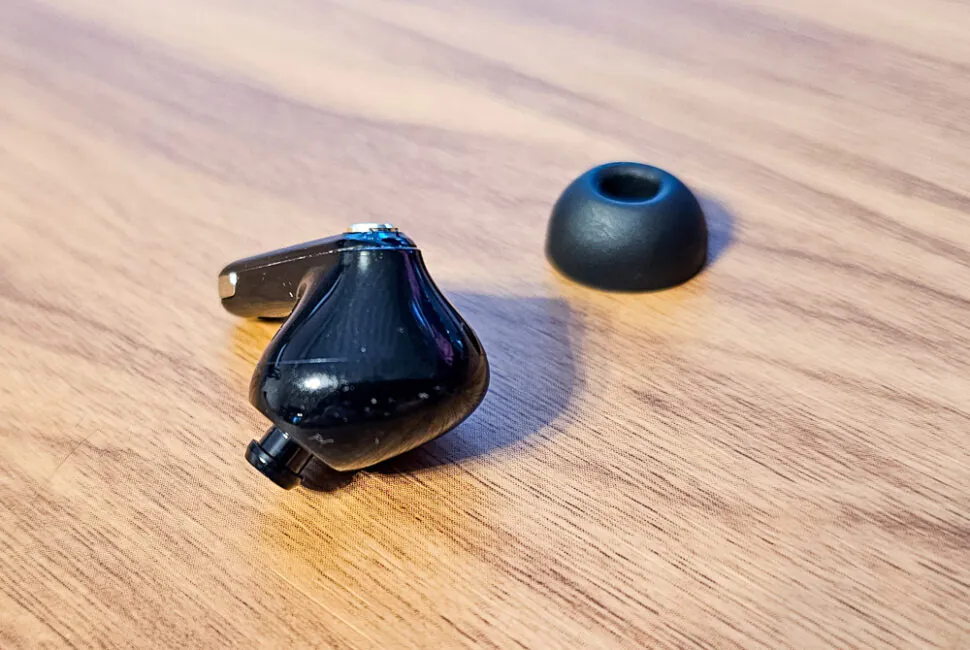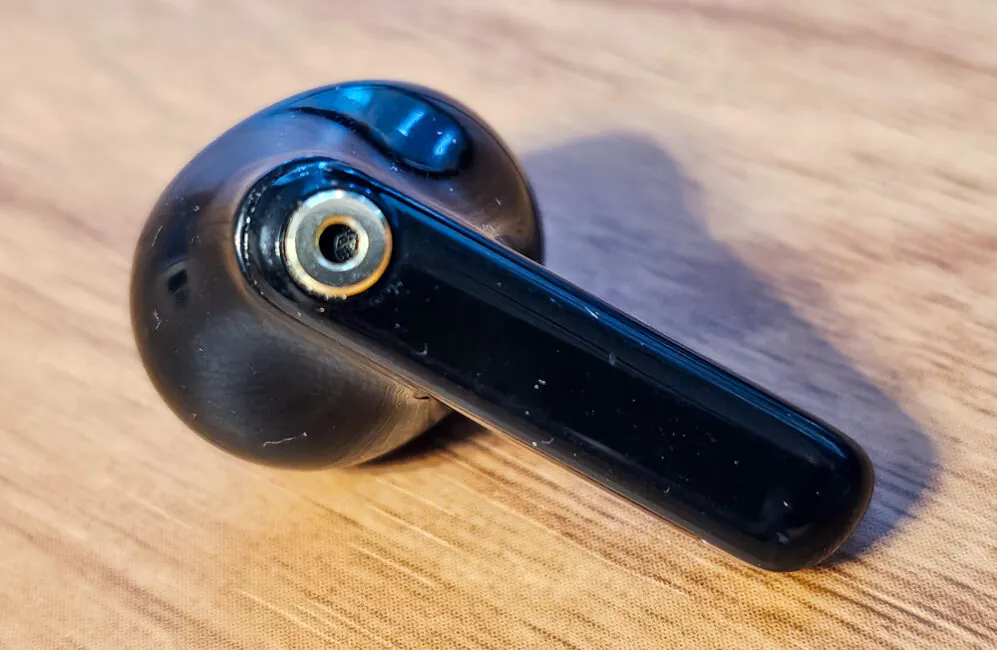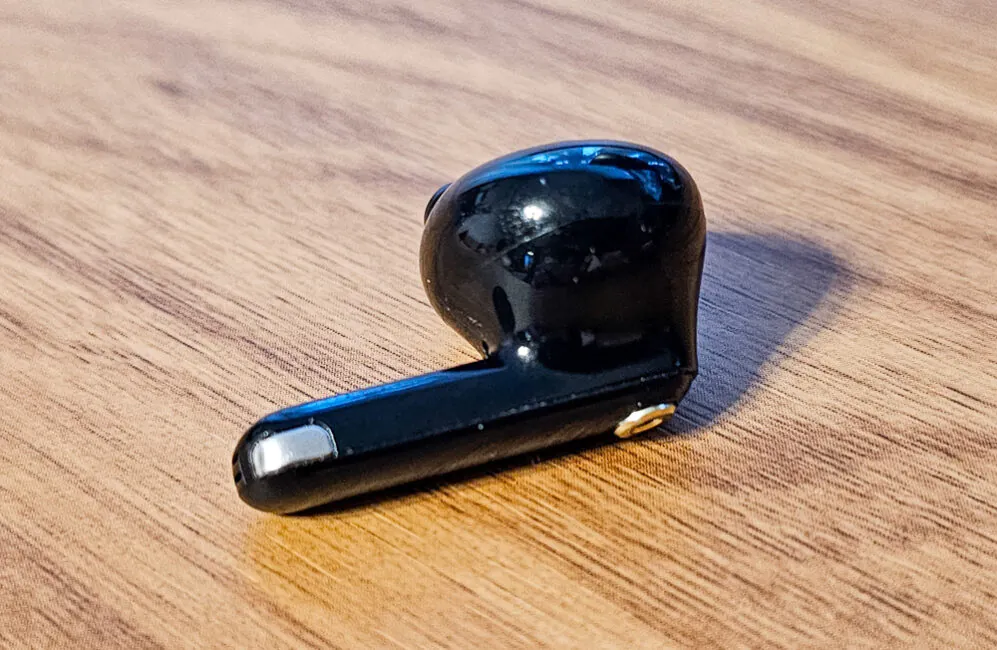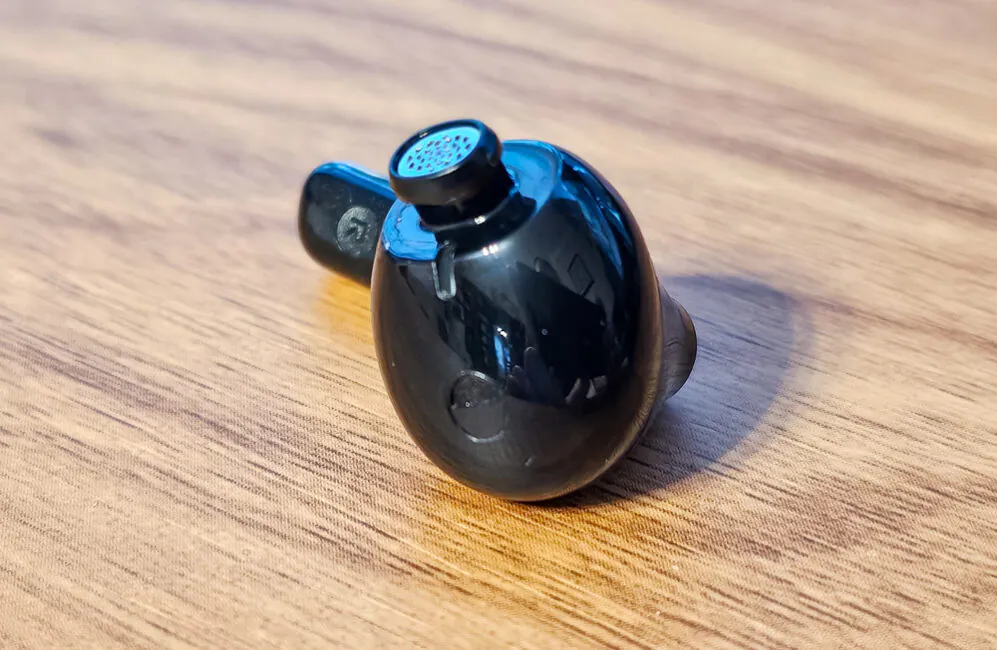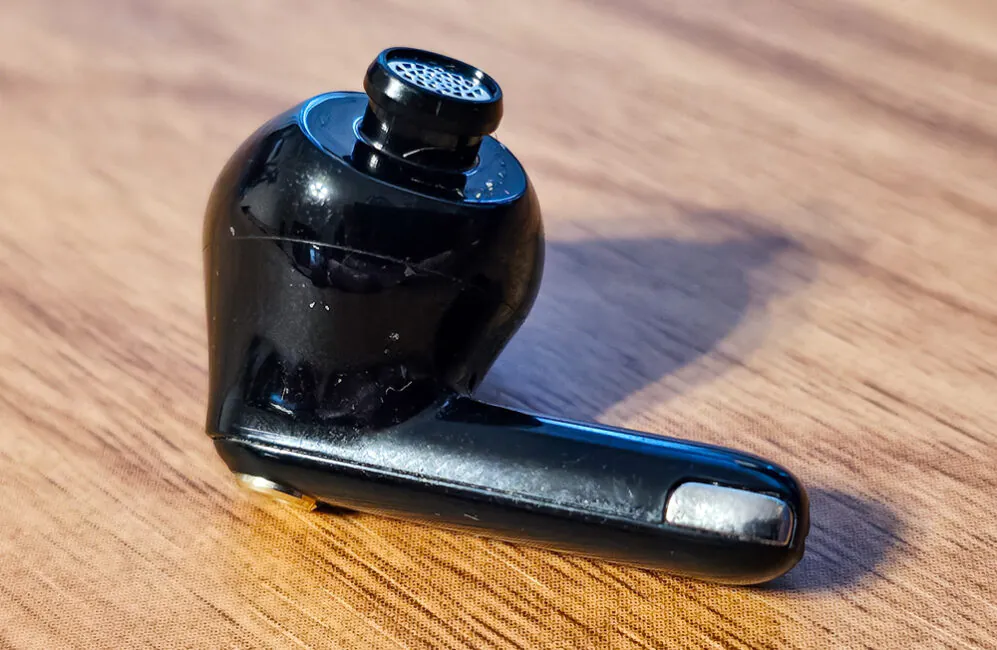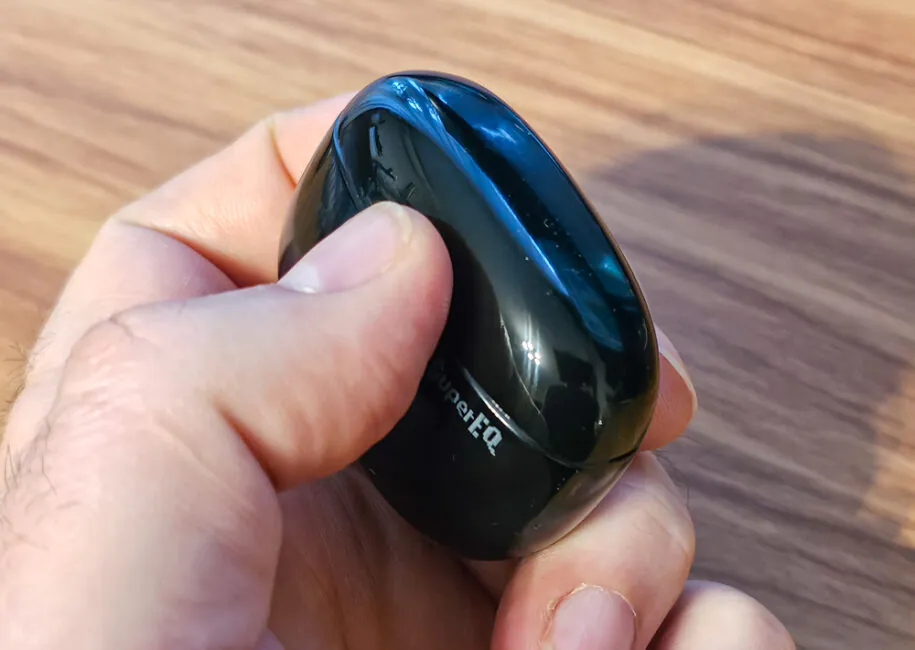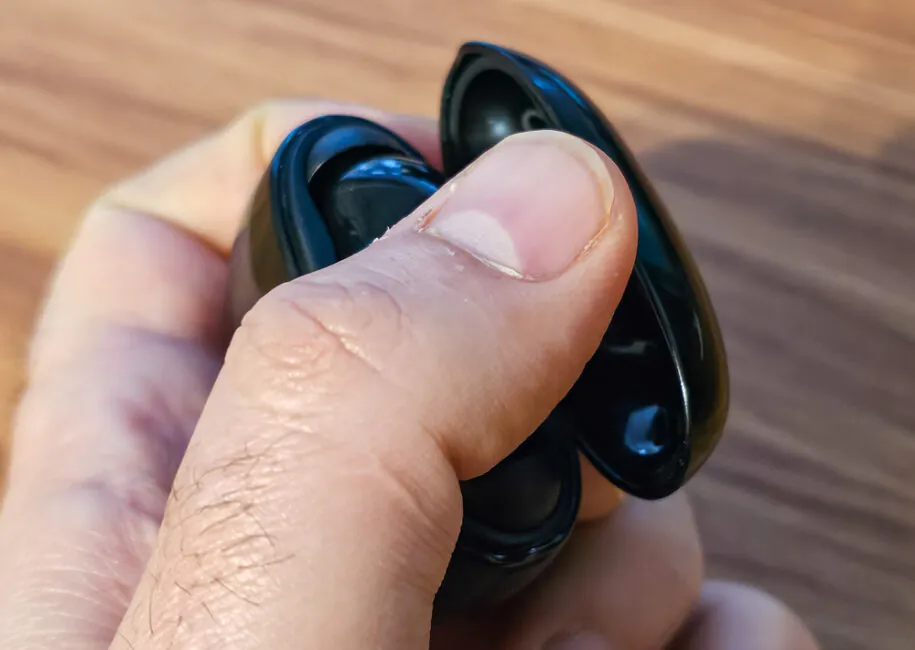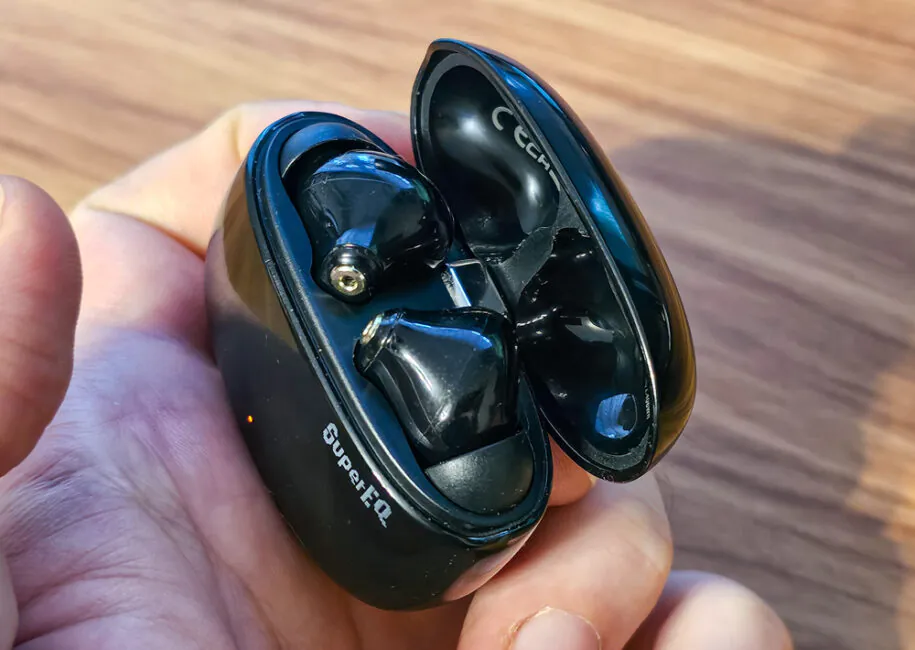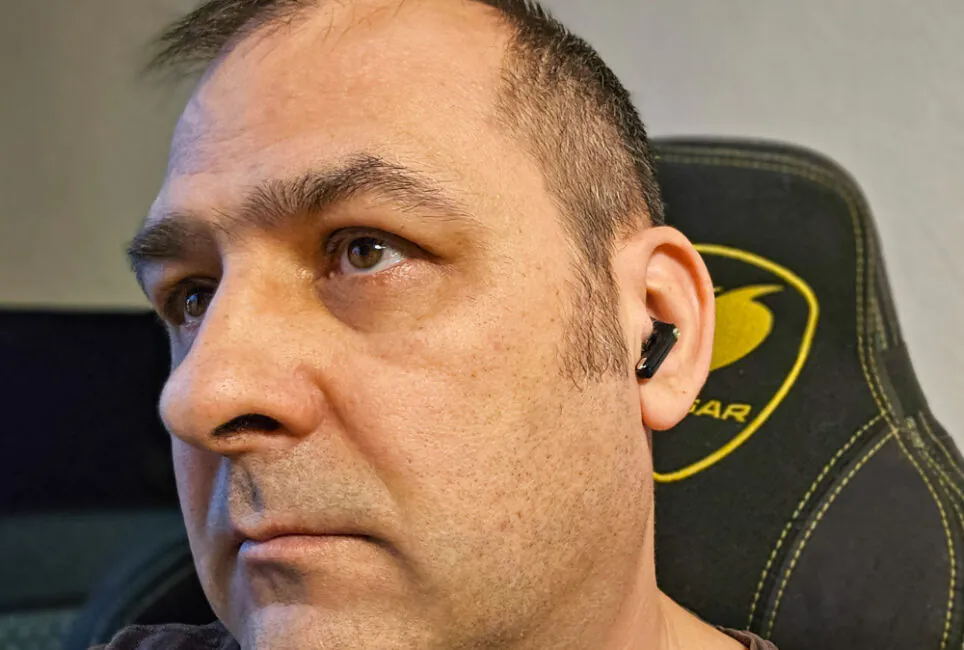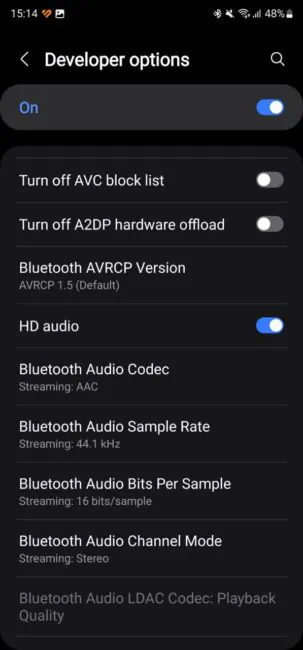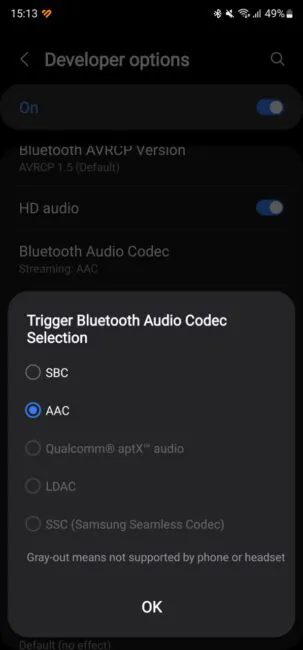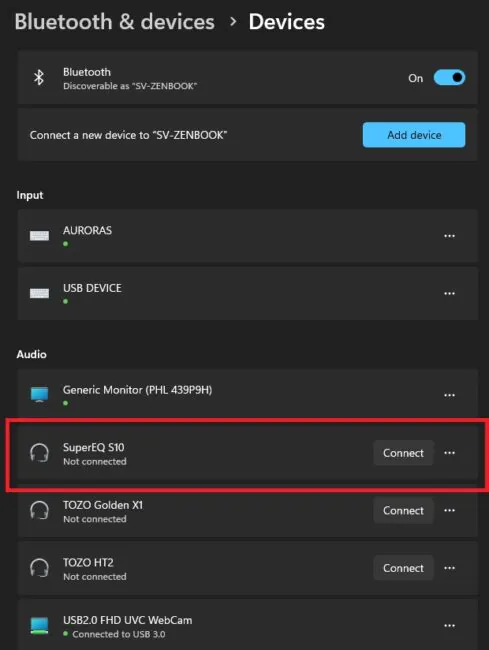© ROOT-NATION.com - Use of content is permitted with a backlink.
The OneOdio SuperEQ S10 ANC headset came to me for testing almost immediately after I released a review of one of the best (and accordingly, the most expensive in my practice) TWS earbuds for audiophiles. So this time, I’m diving from the deck of a premium-class yacht into the ocean of personal audio to explore the possibilities of an inexpensive, truly populist product. I must say, this adventure turned out to be exciting, full of surprises, and unexpected discoveries, but let’s take it step by step.
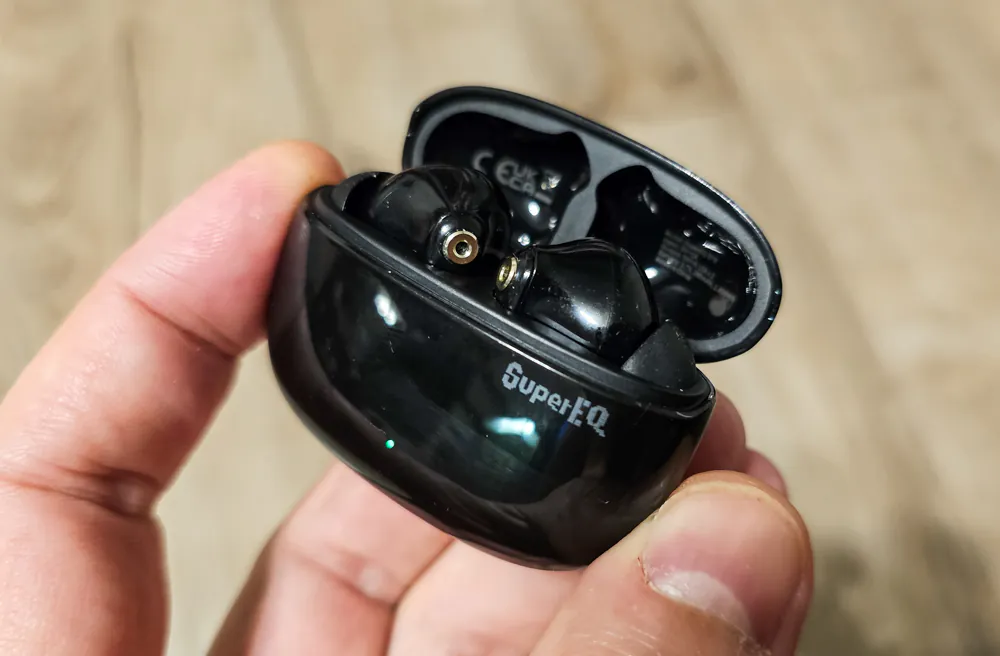
Main specifications and features of OneOdio SuperEQ S10 ANC
- Headphone Type: In-ear monitors
- Number of Drivers: 2
- Driver Type: 10mm Dynamic with Neodymium Magnet
- Impedance: Up to 32 Ω
- Frequency Range: 20 – 200000 Hz
- Wireless Connectivity: Bluetooth 5.4
- Connection Range: Up to 15 meters
- Codec Support: AAC, SBC
- Profiles: HFP / HSP / AVRCP / A2DP
- Gaming Mode: Reduced latency up to 43 ms
- Number of Microphones: 4
- Microphone Sensitivity: 83 dB
- Noise Cancellation: ANC up to -25 dB, ENC (noise reduction during calls)
- Additional Microphone Feature: Transparency mode
- Charging Port: USB Type-C
- Charging Time: 1.5 hours (earbuds), 2 hours (case)
- Battery Capacity: 40 mAh (earbuds), 380 mAh (case)
- Battery life:
- Earbuds:
- ANC On: up to 5 hours at 50% volume
- ANC Off: up to 6 hours at 50% volume
- Including case:
- ANC On: up to 22 hours at 50% volume
- ANC Off: up to 30 hours at 50% volume
- Earbuds:
- Moisture protection: IPX5 (earbuds only)
Positioning and price
The OneOdio SuperEQ S10 ANC is one of the most affordable in-ear headphones with active noise cancellation available on AliExpress. However, it’s not some unknown brand; it’s a device from the fairly well-known Chinese brand OneOdio, which offers quality headphones at a low price. This time, the product costs only $26. So, we’re looking at a very accessible mass-market product. Of course, this segment is incredibly saturated, and there is very stiff competition in it.
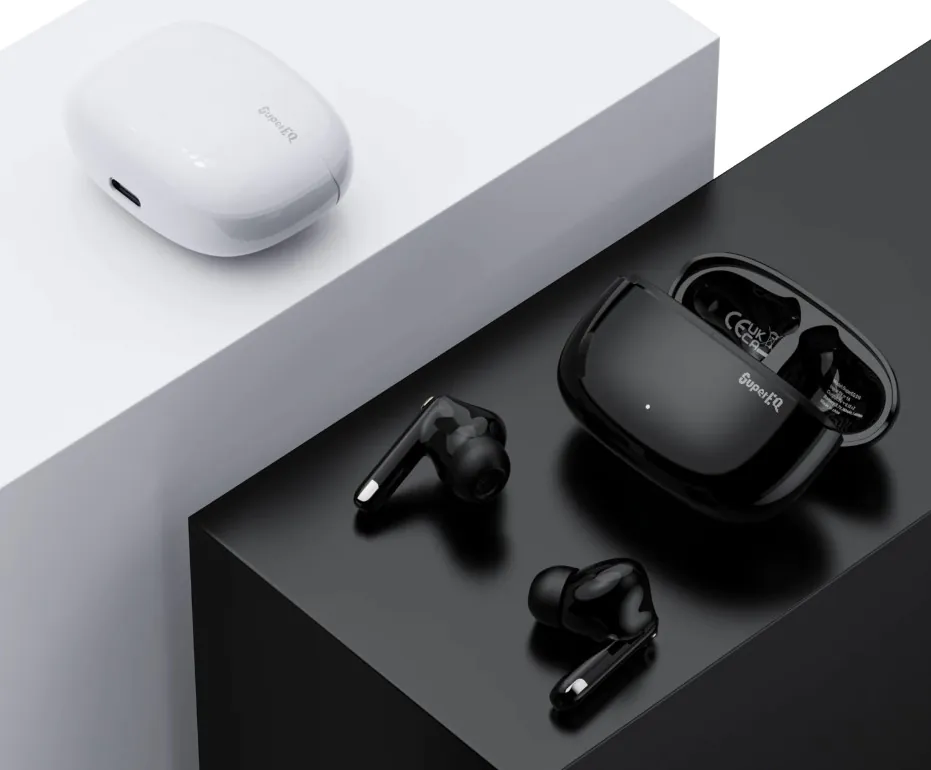
It’s also worth noting that the SuperEQ S10 marks OneOdio’s debut in this product class. It’s the only model of compact TWS earbuds in the manufacturer’s lineup, which primarily produces over-ear headphones and also offers several models of the sports-oriented Open Ear TWS series OpenRock. Whether OneOdio will be able to capture the interest of potential buyers not only with its low price remains to be seen.
Read also: Realme Buds Air 5 TWS Headphones Review
What’s in the package
The OneOdio SuperEQ S10 ANC headset comes in a modest small white box with an image of the product, key information, and specifications.
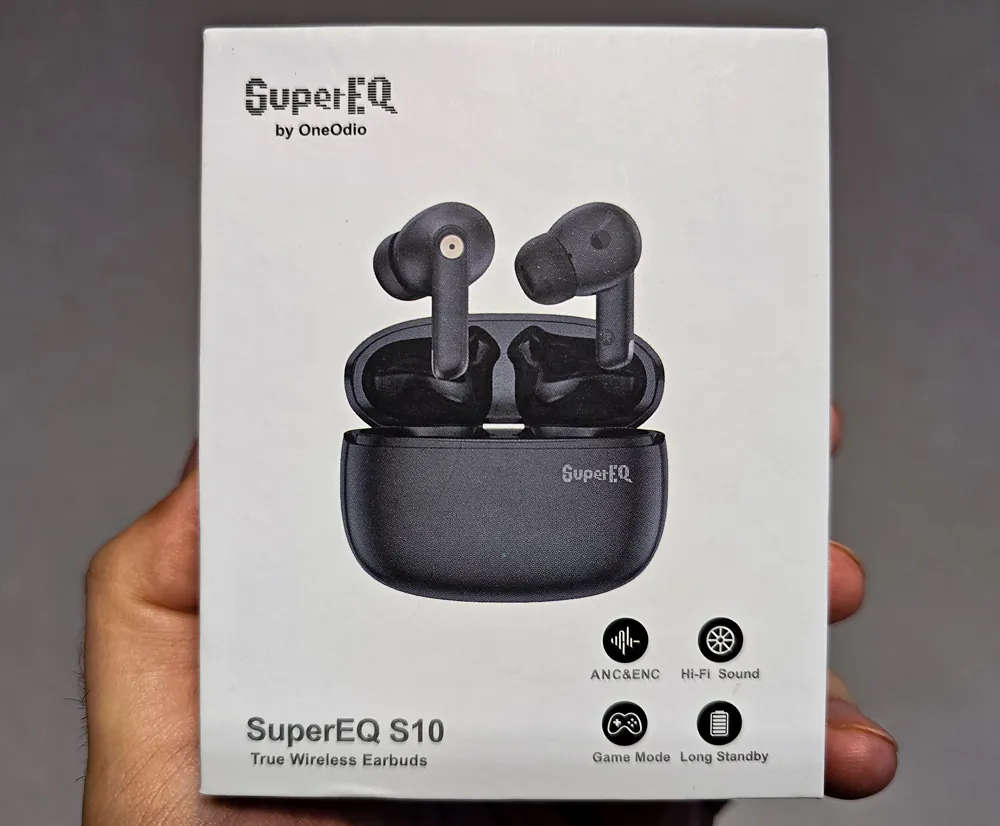
Inside, we won’t find anything out of the ordinary: the earbuds in the case are nestled in a foam holder, and in a separate box, we have a USB-A to USB-C charging cable and 2 pairs of spare silicone ear tips of different sizes, with the third pair already fitted on the earbuds. Additionally, there’s a paper instruction manual in multiple languages in the box.
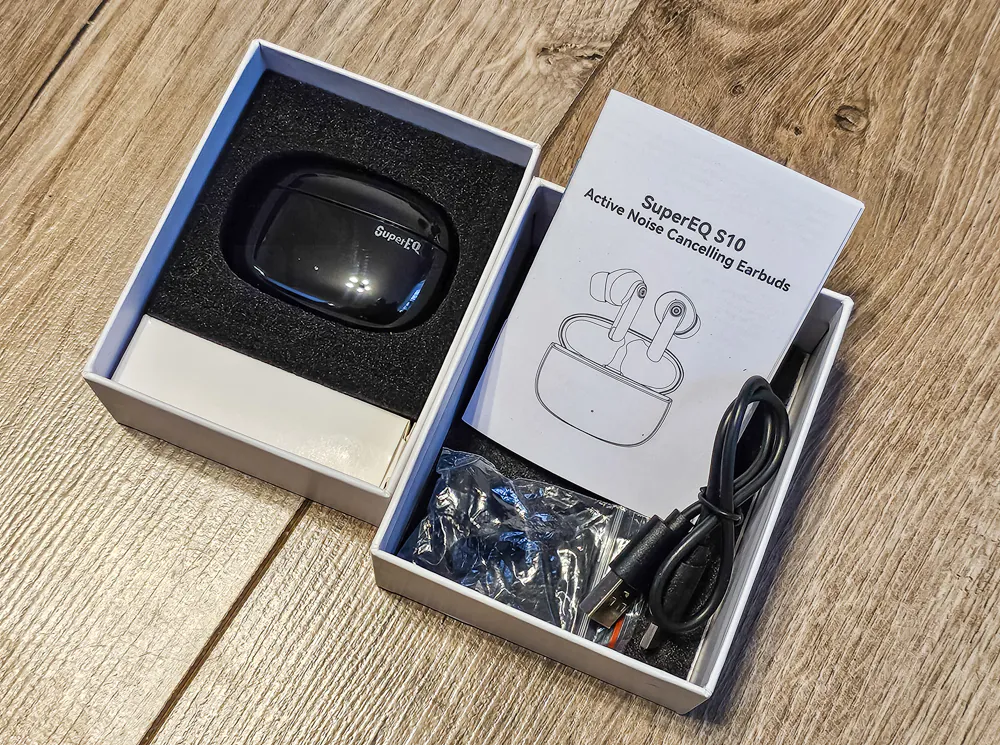
Construction, design, materials and build quality
The main design concept of the SuperEQ S10 is compactness. The case is indeed about 1.5 times smaller than the usual size of charging cases for other TWS earbuds.

The design of the case itself is standard – it’s a rounded oval case with a hinged lid. The main material is glossy plastic. In my case, it’s black, but there is also a white version on sale.
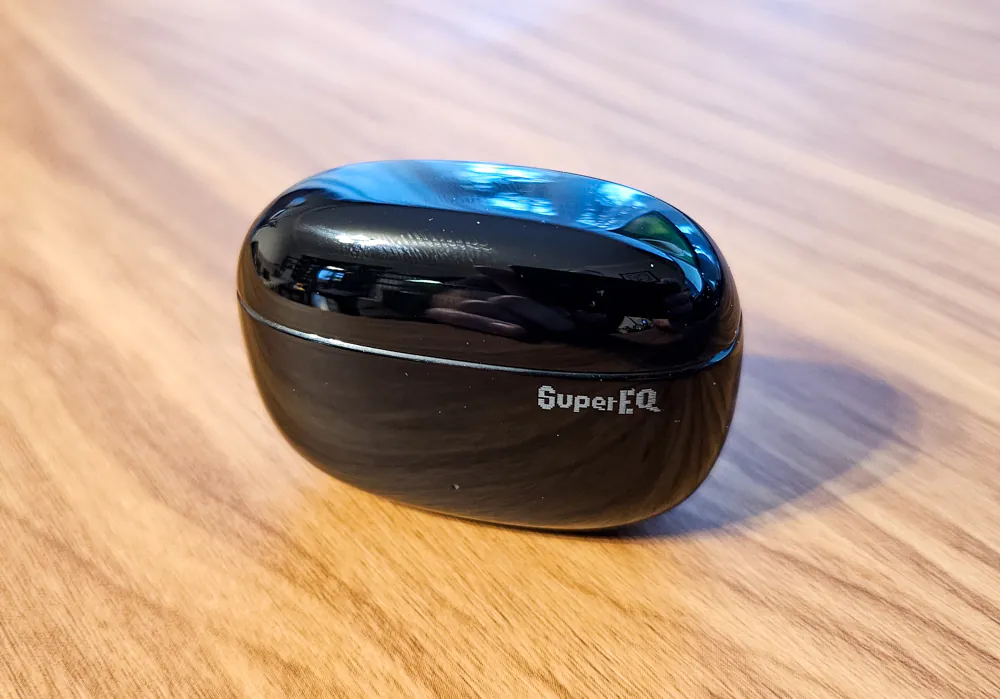
The lid inside has a double construction with recesses for earbuds, just like in expensive models. The hinge of the case lid is made of metal and is fixed in the closed state with a magnet. The edging of the USB-C port is also metal.
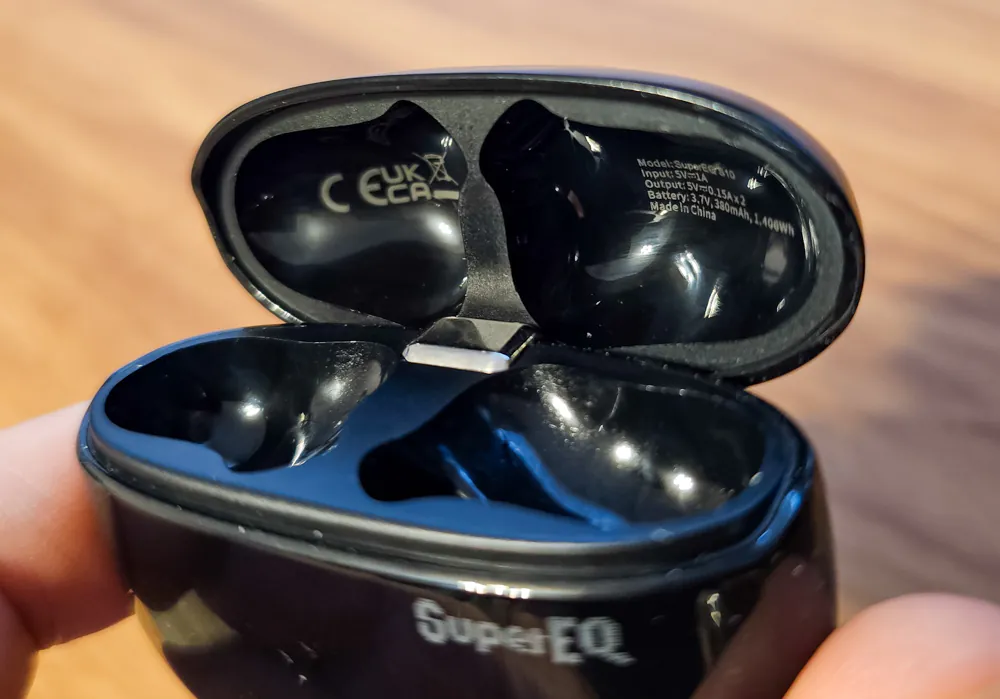
The case houses the earbuds, positioned with their stems down, secured in magnetic slots. The earbuds themselves are entirely made of glossy plastic. The plastic quality is high, comparable to Apple’s earbuds. The design of the earbuds resembles that of the AirPods Pro, except the stems are not curved but straight. However, this design is widespread in the TWS market, so nothing particularly original is found here.
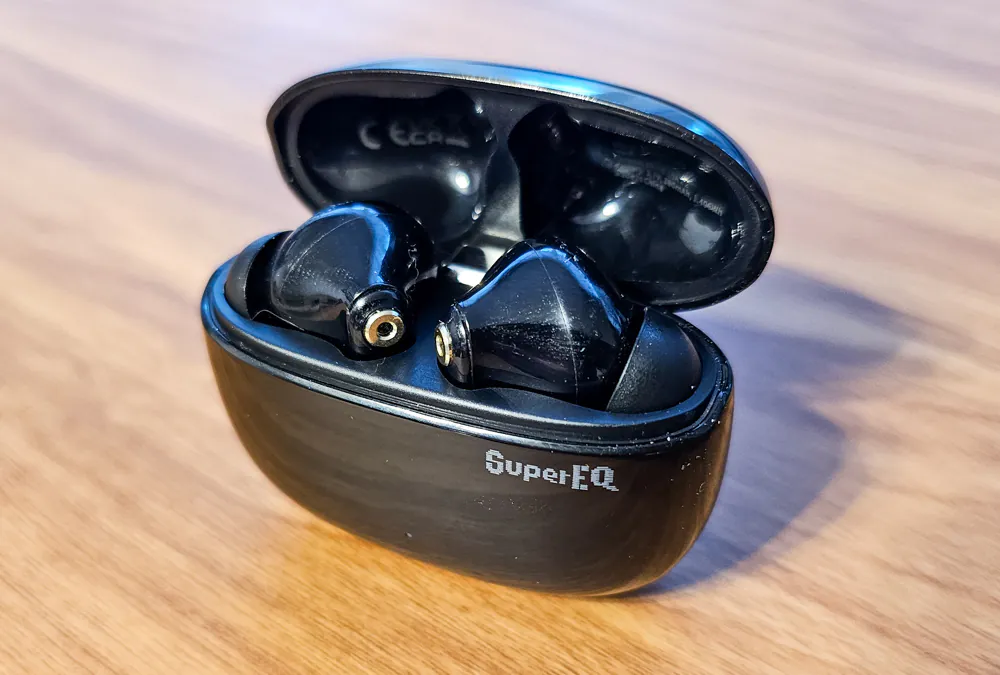
As for the build quality, I was genuinely impressed. The device boasts a very high quality build, despite its very affordable price tag. The case lid has virtually no noticeable play, although this phenomenon is quite common even in much more expensive products. Bravo!

Read also: Samsung Galaxy Buds FE Review: Most Affordable TWS Earbuds from Company
Layout of the elements
Let’s start with the charging case. Everything here is straightforward. There’s a lid on top, with the SuperEQ series name inscription at the front, and beneath the lid, in the middle, is the sole LED status indicator, which can light up in white, orange, and green colors.
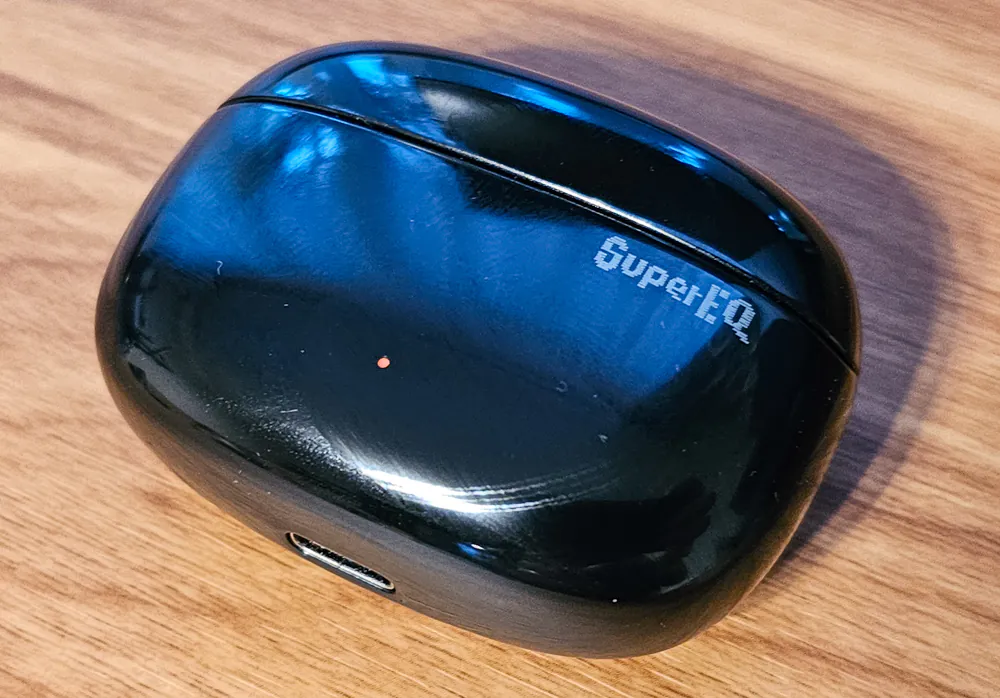
Below is a USB Type C charging port.
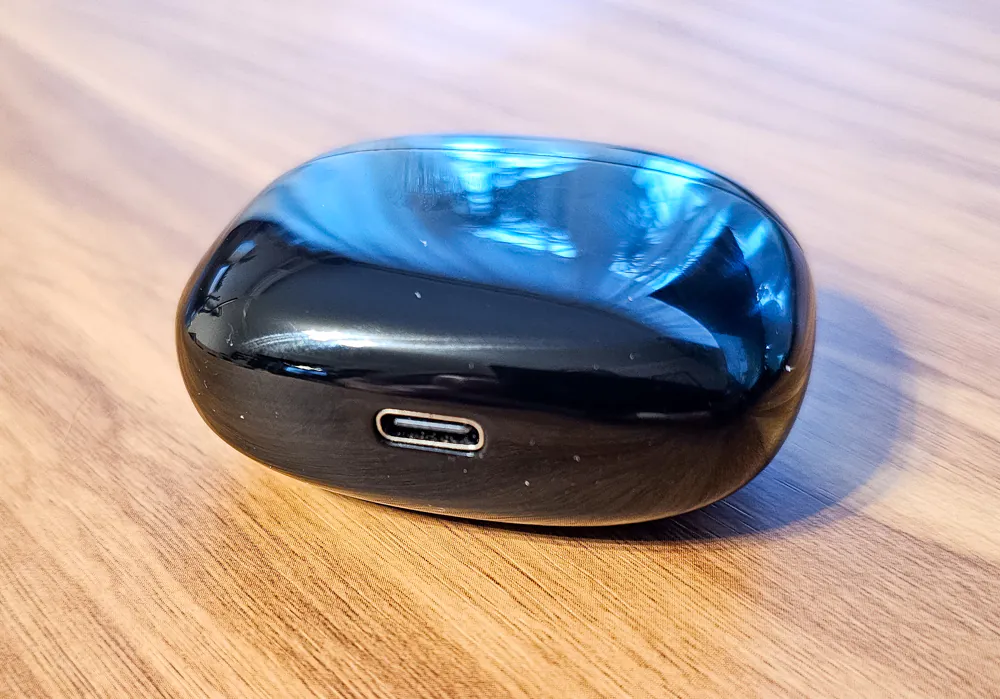
Each earbud insert consists of a main body and a stem. The main body terminates in a nozzle for attaching the silicone ear tips.
 The opening is covered by a metal grille, just like in top-end models. Near the nozzle, I see a thin slit of unknown purpose, perhaps for decompressing the acoustic chamber.
The opening is covered by a metal grille, just like in top-end models. Near the nozzle, I see a thin slit of unknown purpose, perhaps for decompressing the acoustic chamber.
On the inner part of the housing, there is also a black plug with a mesh, very similar to a proximity sensor, but there is no such element in the earbuds, so I don’t understand its purpose.
On the outer part of the earbud, at the junction of the main body with the stem, there is a hole framed by a metal ring (and it’s actually a metal part, surprisingly), where one of the microphones is installed. Slightly below, there is a touchpad for controls. At the bottom of the stem, we see two charging contacts for the earbuds and two slots between them, under which the second microphone is located.
Read also: HUAWEI FreeBuds SE 2 Wireless Headphones Review
Comfort of using OneOdio SuperEQ S10 ANC
As always, I first evaluate how convenient it is to use the case. And I’ll say right away that it can be easily opened with one hand. If only you find the right position to touch, because it’s very difficult due to the fact that the case is completely symmetrical, and there is no cutout at the front under the lid. That’s a small downside of the earbuds.
Overall, the case is very convenient because, as I mentioned, it’s very compact and will fit into any pocket, even snug clothing. And that’s really cool.
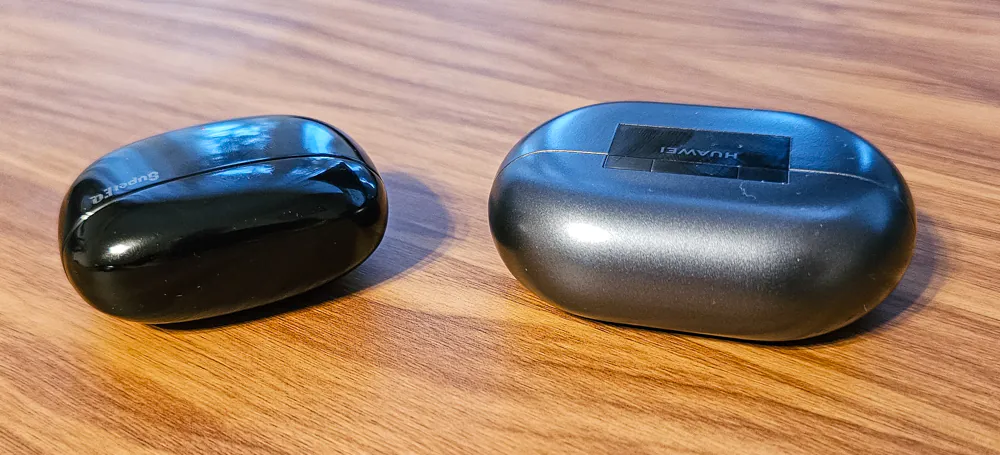
Well, okay, we figured out how to open the case. But getting the earbuds out of the case turns out to be quite challenging too. Especially with large male fingers without long nails. There’s simply nothing to grip onto.
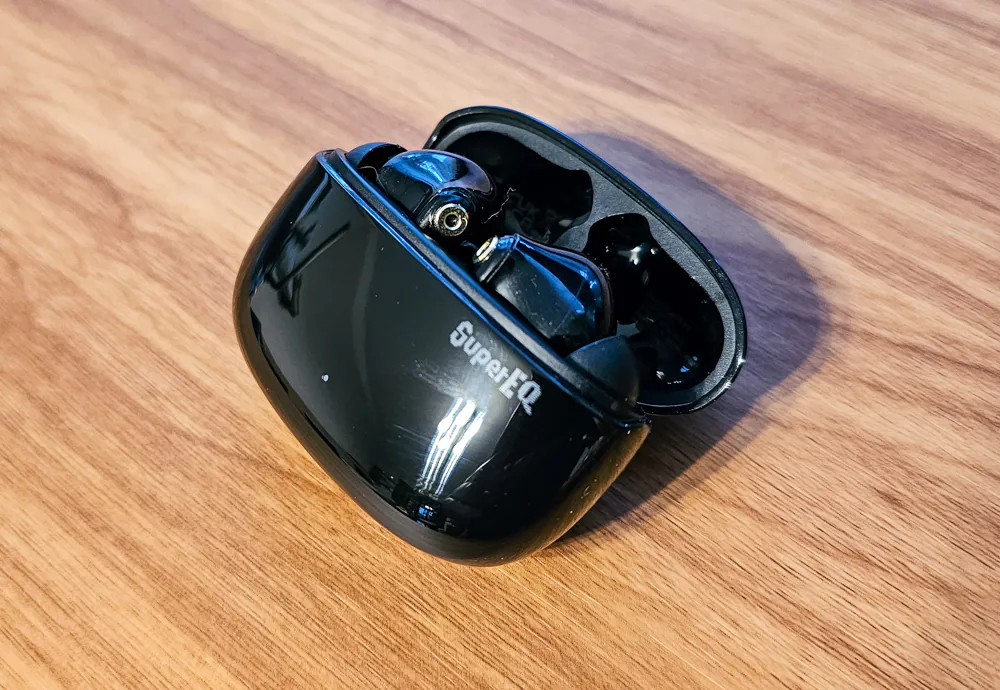
The procedure is further complicated by the fact that you’ll need to flip the earbuds 180 degrees to insert them into your ears because they are positioned with the ear tips facing outward in the case. Also, try not to accidentally touch the touch panels during this process, as music playback or switching noise cancellation modes may occur before you intend it to. The reverse process of placing the earbuds back into the case is a bit easier because the earbuds are pulled into the slots by magnets and align themselves correctly. Overall, the processes of removing the earbuds from the case and putting them back in are very inconvenient, especially in low light conditions. It requires some getting used to and practicing precise movements.

As for the earbuds, they are also very compact, so they fit deeply into the ears, hold well, and should not cause any unnecessary discomfort. In this regard, I am quite satisfied and have no complaints.
Read also: Defunc True ANC TWS in-ear headphones review
Control
As I mentioned earlier, the earbuds are controlled using two touch panels. Overall, nothing unusual, the control model is standard, but there is a slight delay between touches and actions. The panels recognize single, double, triple taps, and long presses, but gestures are not supported.

Touches on the panels are accompanied by auditory cues – you’ll hear a subtle click in the respective earbud. Additionally, when switching modes (powering on, connecting, activating noise cancellation or transparency mode), you’ll hear voiced prompts in a female voice. Unfortunately, the earbuds’ control is not comprehensive – there’s no volume adjustment for music playback or voice calls.
Sound of OneOdio SuperEQ S10 ANC
This section won’t have many words because you shouldn’t expect exceptionally high-quality sound from a $25 headset. However, the SuperEQ S10 still manages to impress in this aspect.

Lately, I’ve been quite spoiled by high-quality sound because I’ve been testing Hi-Fi solutions a lot and mainly using custom Bluetooth-enabled in-ear monitors with LDAC support for music listening. I listen to tracks in high quality from Tidal – in formats like FLAC, MQA. But even compared to much more expensive solutions, I can acknowledge the very good sound quality of the SuperEQ S10.
Of course, I find the clarity and detail of the high frequencies slightly lacking, and the bass feels a bit muddy to me. Nevertheless, overall, if you’re not a super experienced audiophile, the sound quality of these earbuds will likely suffice for you. If needed, you can adjust the sound with an equalizer. It’s pretty standard – lower the mids a bit, boost the lows and highs, and the sound becomes almost perfect.
A few more technical details. Or rather, one key detail that directly affects the sound quality. For some reason, many sources note that the earbuds only support the standard SBC codec. However, this is not the case. In fact, the more advanced AAC codec is also supported. Therefore, the headset is capable of streaming music with acceptable quality on most Android smartphones, as well as on iPhones, where the AAC codec is the primary one.
Read also: Haylou X1 2023 TWS headphones review: high quality for a low price
Microphones, headset function, noise reduction, sound transparency
In this regard, the headset performs decently. It’s not top-tier quality, but the microphones are quite suitable for everyday use. Callers mention that during conversations, they hear me as if I’m slightly distant, and the voice tone tends to be mid-range dominated, sounding somewhat flat. However, overall, you’ll be audible, even during outdoor conversations.
As for the ANC quality, it’s also at a confident basic level. The noise cancellation doesn’t reach the level of flagship models, but that’s to be expected. The transparency mode also functions adequately; the microphones slightly amplify the ambient sound, but it’s not critical.
Read also: Realme Buds Air 5 Pro review: I would have paid more!
Connections and delays
The headset connects to any device through the standard Bluetooth menu. As you may have already guessed, there’s no dedicated mobile app for the headphones. At this stage, the main drawback of the SuperEQ S10 becomes apparent—the lack of multipoint functionality, meaning the headphones cannot be simultaneously connected to two devices. You can connect the headset to your smartphone, then disconnect without breaking the pairing and connect to your laptop. The headset will remember both devices, but it will automatically connect only to the last paired device. To connect to the second device, you’ll need to do it manually after disconnecting from the first one.
When it comes to the quality of the connection, everything is very good in this regard. And this is a typical situation for all devices using Bluetooth 5.4 modules. There are no interruptions in streaming, neither indoors nor outdoors, and the connection remains reliable in open spaces up to 15 meters away and even through a concrete wall indoors.
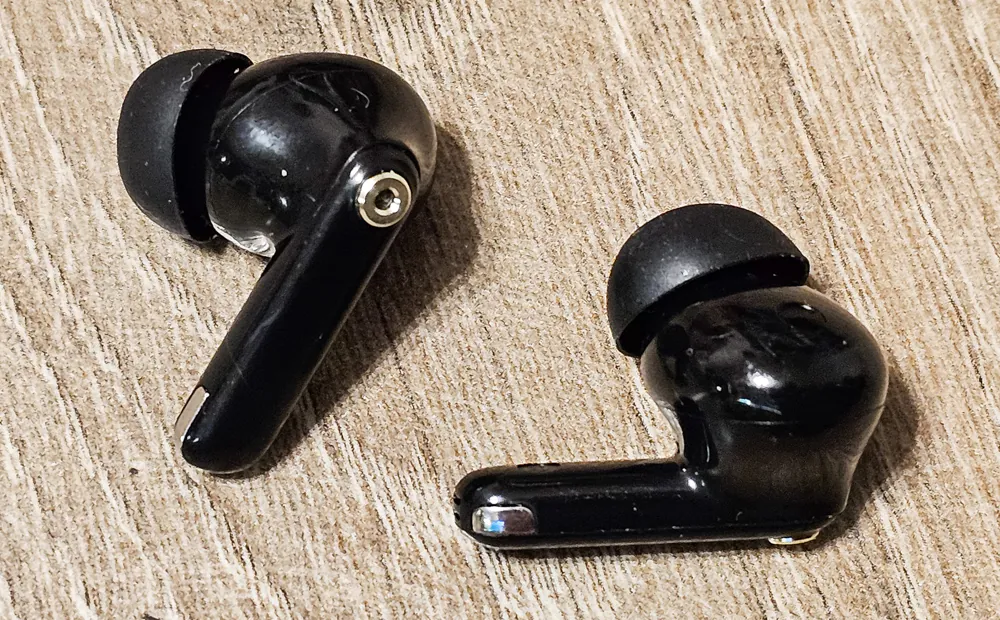
OneOdio SuperEQ S10 ANC also features a low-latency gaming mode, which can be useful for mobile gaming or video playback. Simply triple-tap the left earbud’s touch sensor to activate it. The trade-off of the gaming mode is a slight reduction in audio quality parameters.
Read also: TOZO Golden X1 review: cool hybrid TWS earbuds for music lovers
Battery life
The pure standalone battery life of the earbuds is average compared to the market, ranging from 5 to 6 hours, which is considered acceptable. Additionally, you can recharge the earbuds 4 to 5 times in the case. This is also good considering the compact size of the case. Overall, objectively, I cannot praise or criticize the device in this regard because all the metrics are quite standard. However, achieving the same level of autonomy as competitors but in a smaller device is worthy of recognition. So, I ended up praising it.
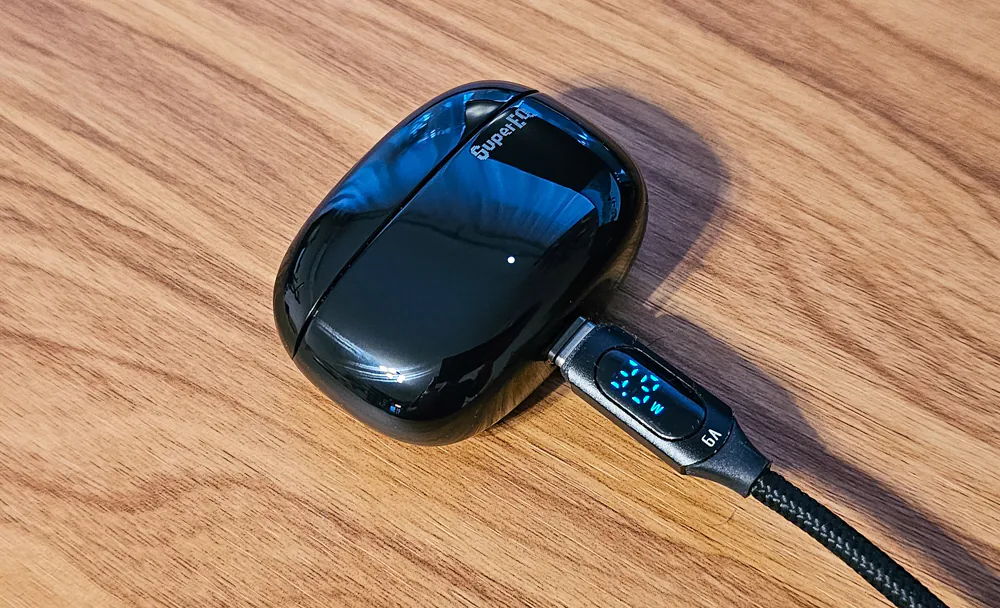
The full charging time for the earbuds is 1.5 hours, and for the case, it’s 2 hours. These figures also correspond to the current average state of the TWS market.
Read also: Sanag S5 Pro review: Open Ear TWS headset, MP3 player, audio speaker, recorder
Conclusions
My main impression after testing the OneOdio SuperEQ S10 ANC is genuine surprise. The manufacturer managed to create a decent and yet affordable product that doesn’t even evoke rejection in such an experienced user as myself. It’s a very well-made miniature headset that performs basic functions admirably. The main advantages of the model include comfort, decent sound, adequate microphones, good battery life, and reliable connectivity.
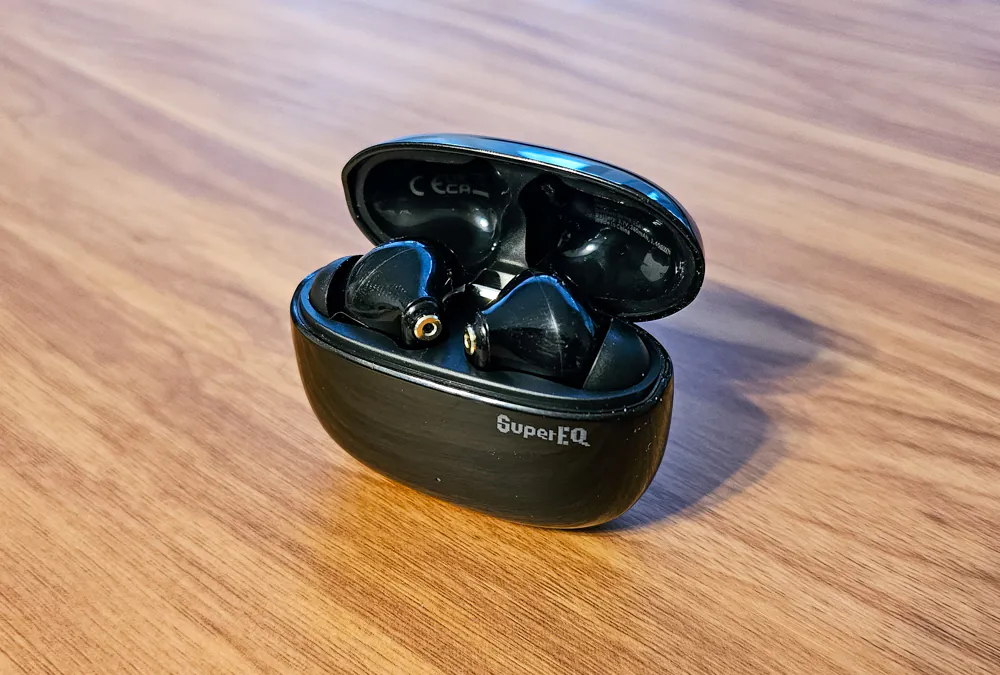
Of course, it’s not without compromises. For example, the ANC here is of a basic level, and the process of removing the earbuds from the case is not very convenient. The main drawback for me is the lack of the feature for simultaneous connection to multiple devices. However, if you need affordable wireless earbuds for your smartphone, I can’t help but recommend this model because it’s truly excellent for its price.
Where to buy OneOdio SuperEQ S10 ANC



